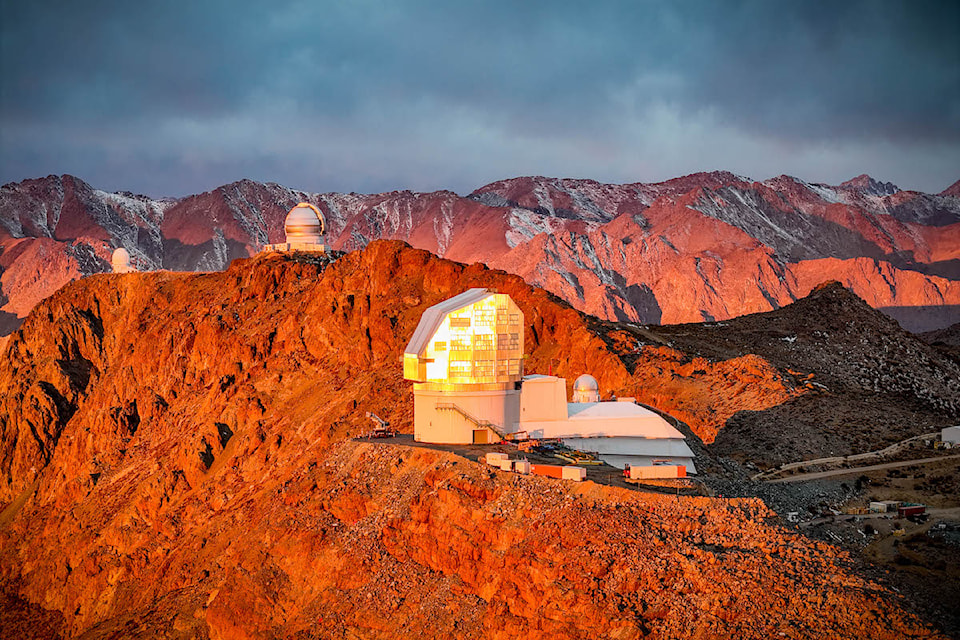While spending part of her undergrad in France, Jaclyn Jensen's time studying abroad just happened to line up with astronomical data starting to flow from the space-bound Gaia telescope.
The experience helped cement her interest in the origins of the Milky Way and how it formed. The University of Victoria PhD student is now among a group of astronomers whose efforts to reconstruct the history of space have earned them the moniker of galactic archaeologists.
“The biggest question I think we all have is ‘How did we get here’ or 'Where did we come from?’” Jensen said in an interview.
Similar to archaeologists who comb through rubble to uncover mysteries of the past here on Earth, astronomers are using characteristics of old stars – like their elemental abundance and how they orbit – to create sort of a fossil record of the galaxy's formation.
“In galactic archaeology, what we do is we use these facts to reconstruct the history of the Milky Way through time.”
In the next couple of years, Jensen's corner of cosmology will likely be thrust forward thanks to a new facility in Chile that could she more light on some dark aspects of space.
Equipped with the world's largest digital camera and a telescope with an exceptionally wide field of view, the Vera C. Rubin Observatory will offer deeper looks into the universe, advance the understanding of dark matter and will survey the entire Southern Hemisphere sky in just three nights.
Jensen's research deals with the dwarf galaxies that are orbiting the Milky Way and how they're being destroyed and then accreted to the system that humans call home. As the smaller orbital galaxies break apart, they leave trails of stars that form pearl-necklace-like structures called stellar streams.
The Chile observatory and its car-sized camera will be fantastic as it'll detect super faint structures that will help spur many new discovers about dwarf galaxies and stellar streams, Jensen said. That's partly because of the yet-to-be completed facility's potential for growing the body of knowledge about dark matter.
That matter gives off no light or emissions, so it can't be observed, but scientists are able to record its gravitational influence on other visible objects. Dark matter has lots of implications for the UVic astronomer's research because it makes up a big component of the Milky Way's mass, which affects the gravitational force that dictates the stars orbiting our galaxy.
"What's interesting about stellar streams is that the path of them, the orbit and their position on the sky are basically indirect detections of the galaxy's distribution of dark matter," Jensen said.
Despite being present at the time of the Big Bang and it playing a vital role in the distribution of galaxies, the astronomer said dark matter remains ones of biggest known conundrums.
“Clearly it’s this fundamental component of the universe that’s been with us forever and we hope that by understanding dark matter better we might be able to disentangle the misunderstood physics that govern our universe,” Jensen said.
Dark matter is also an important factor in galaxies evolving via the consumption of smaller outlying systems, she added. With Rubin's large scans of the sky poised to provide more dark matter data, the UVic student is interested in seeing whether the initial stages of stellar stream can be observed. Another possibility that excites her is seeing individual stars that were consumed by a dwarf system.
Scientists assume that, like the Milky Way, dwarf galaxies also formed by building off smaller systems. Astronomers still don't know the smallest size of a dwarf system, Jensen said. The Chile observatory's ability to detect stellar streams and dwarfs that are too faint for current telescopes could help that understanding.
“What my research aims to answer is how many of these Milky Way dwarfs accreted another dwarf in their past,” she said.
As she seeks to unravel more about the universe's past, Jensen said the present is an exciting time to be in astronomy as the Chile observatory follows the launch of the Euclid and James Webb space telescopes. The Rubin site is set to begin operating next year before it's publicly available data is expected to start flowing in 2026.
“It’ll be on the forefront of everybody’s mind I’m really interested in using it.”

